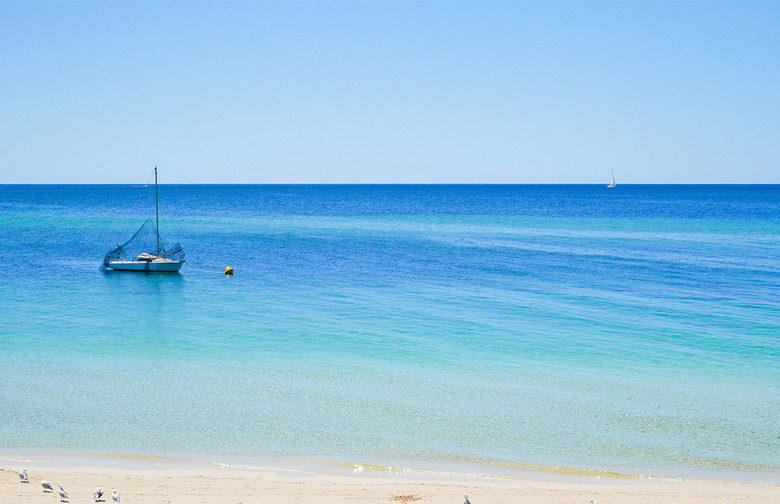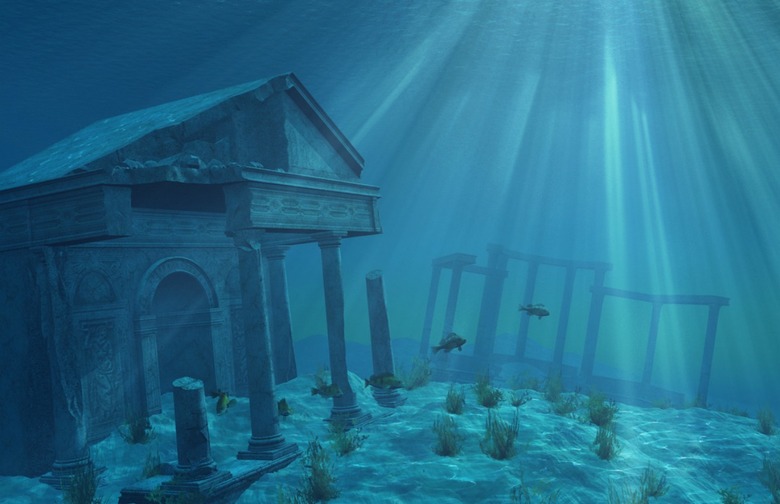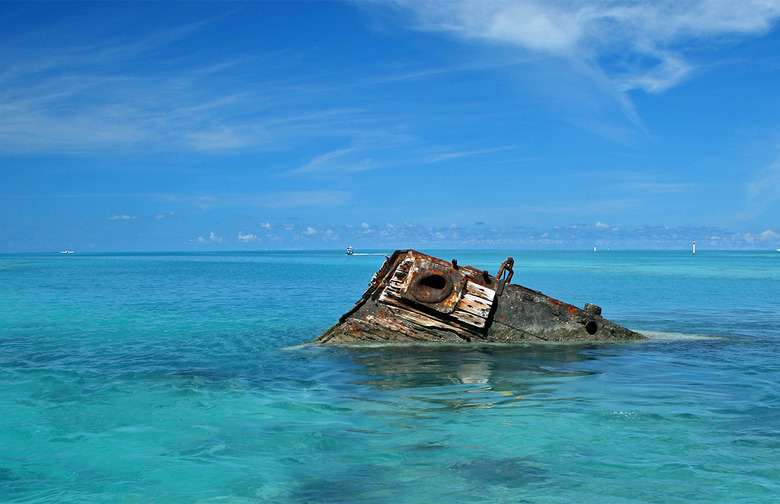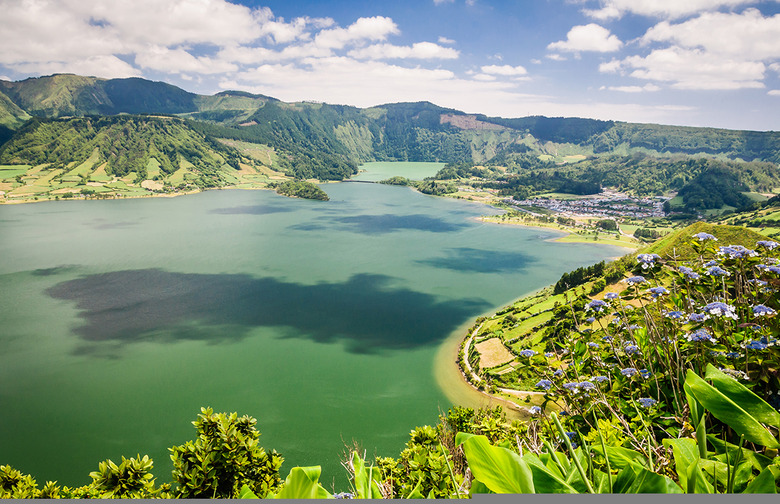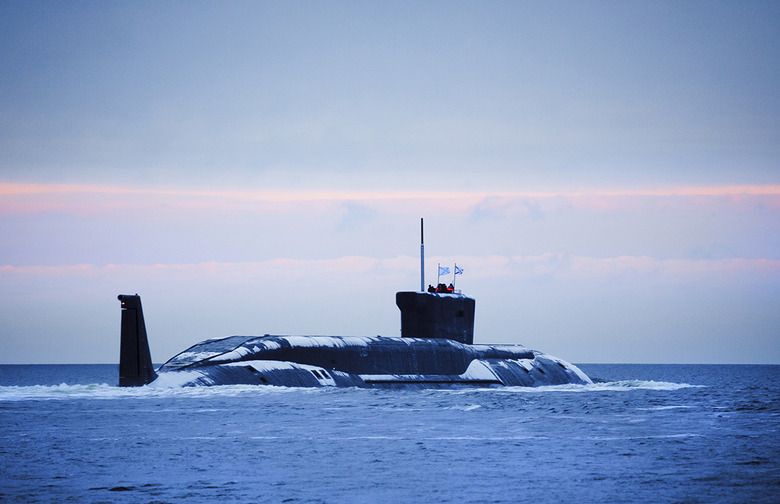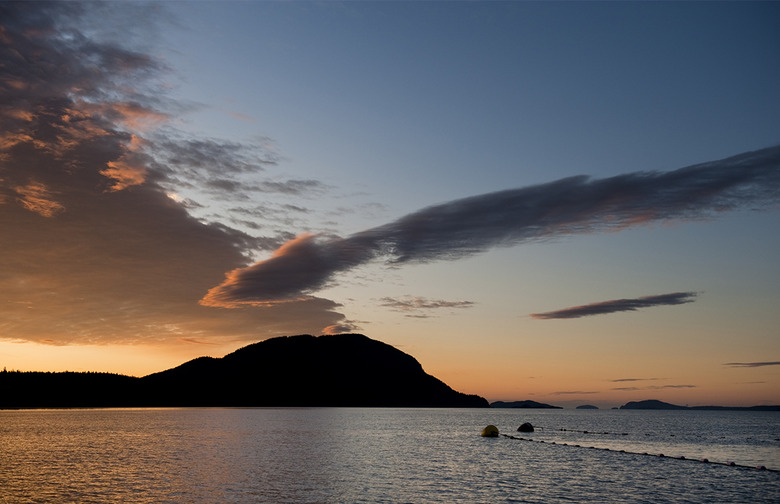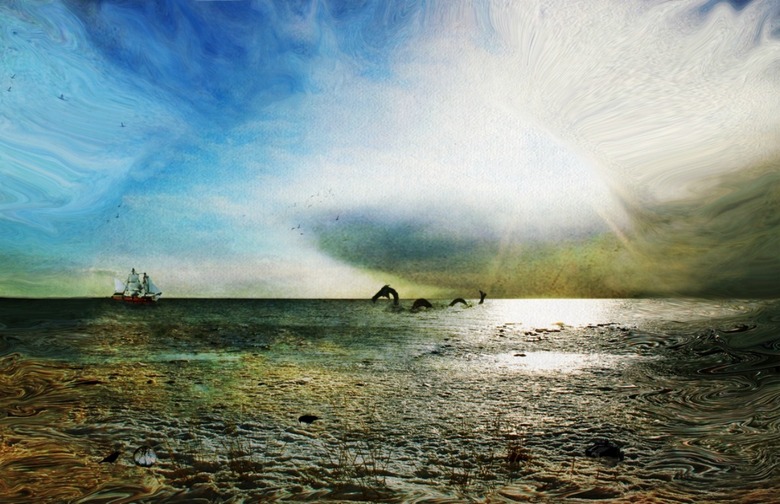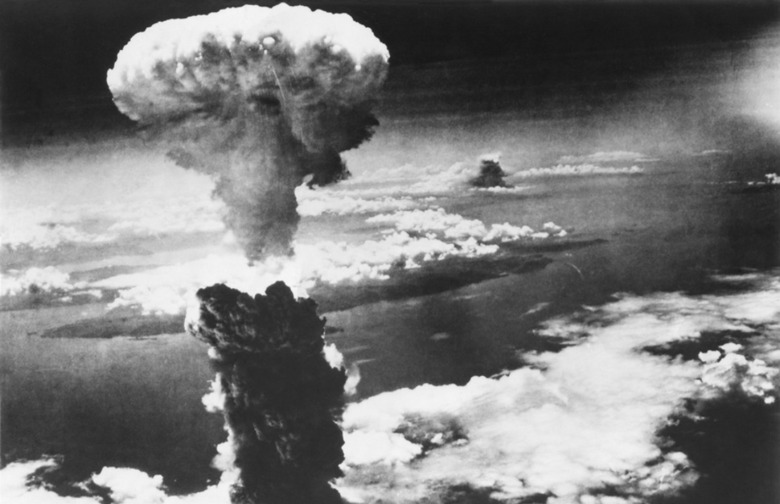These 8 Unsolved Ocean Mysteries May Make You Want To Move To A Landlocked State (Slideshow)
Although you've likely heard numerous stories about lost ships or ghost ships, it's easy to take comfort in the fact that the mysterious occurrences took place decades or even centuries ago. Not so with the Kaz II, a 32-foot catamaran that was found drifting 88 miles of the northeastern coast of Australia on April 20, 2007 — with no trace of its experienced three-member crew. What hints did investigators find? Perhaps signs of a scuffle? Evidence of a third-party intervention? Damage from a squall or storm? Nope. Nothing. Not only was the ship still in fine, seaworthy condition, but the engine was still running, the men's lifejackets were safely stowed away, their laundry and fishing lines were laid out, a laptop was set up and turned on, and food and flatware was still neatly placed on the kitchen table.
Lost Islands
We're all familiar with the story of Atlantis: an ancient island that allegedly sank a few thousand years ago. Most historians agree that Atlantis likely never existed, but don't let that lull you in believing similar situations can't occur. In fact, they already have. The islet of Bermeja was mapped as lying off the north coast of the Yucatán peninsula from the sixteenth to twentieth centuries, yet during extensive mapping efforts undertaken just prior to the new millennium, it was nowhere to be found. Explanations range from cartographical errors (which would be odd, considering how often it was included in maps), to shifts in the geography of the ocean floor, to rising sea levels, and even conspiracy theories claiming that the CIA destroyed the island in order to expand the economic zone allotted to the U.S.
Elsewhere, a previously undiscovered underwater island was found in the Aegean Sea near the small Greek island of Delos in 2014, which included numerous buildings and even a pottery workshop containing 16 terracotta pots and the remains of a kiln embedded in the sea floor. In Japan, divers discovered what they believed to be an ancient underwater site in 1987 (named the "Yonaguni Monument"), complete with pillars, pyramids, castles, and even a stadium. Although some think this site holds remnants of the lost continent and civilization of Mu, many scientists alternately believe it to simply be a natural formation, citing the fact that sandstone tends to fracture and leave both horizontal and vertical flat surfaces.
The Bermuda Triangle
Take a map and draw a straight line from Bermuda to San Juan, Puerto Rico, another from San Juan to Miami, and a third from Miami to Bermuda. The area within this newly formed shape is known as the Bermuda Triangle, and it contains some of the biggest mysteries in recorded history. Basically, think of the area as the place where people and things (like planes and ships) go to disappear. The explanations for these mysteries vary, but here's a short list of just some of the permanent aircraft disappearances, the year, and the passengers/crew lost: ERCoupe F01 (1965, 2 pax), USAF C-119 Flying Boxcar (1965, 10 pax), USAF KB-50 (1962, 9 pax), G-ACRE Star Ariel (1949, 20 pax), Douglas DC-3 (1948, 39 pax), Avro Tudor G-AHNP Star Tiger (1948, 31 pax), and five TBF Avengers (1945, 14 pax total). Oddly, a PBM Mariner with 13 airmen was also lost while searching for the missing Avengers. Oh yeah, and about 10 ships have been lost at sea in the Triangle, along with their 750 crew members and passengers. But, by all means, enjoy your next trip to Bermuda.
The Mary Celeste
On November 7, 1872, the American merchant vessel Mary Celeste left New York City with 10 people onboard: the captain, his wife, their two-year-old daughter, and a crew of seven. On December 5, the ship was found adrift off the Azores Islands in Portugal. The people, the lifeboat, and some of the sails were missing, and there was a bit of interior water damage — yet the Mary Celeste was still in seaworthy condition. Although most of the ship's papers and navigational instruments were gone, all personal belongings were left undisturbed, and the most recent log entry was dated only 10 days prior to the ship being discovered. Explanations ranged from mutiny to seaquakes, waterspouts, giant squid attacks, effects from the fumes of the poisonous denatured alcohol stored below, and even paranormal intervention, but there was no conclusive evidence to support any of these theories. The only thing we know for sure is that the 10 people aboard were never seen or heard from again.
The Missing Submarines
Submarines are warships, so it should come as no surprise when one sinks or goes missing once in a while — especially during times of war. However, this doesn't help explain how four different submarines went down. Especially when they all disappeared in 1968, were from four different countries (the U.S., Israel, France, and the Soviet Union), and vanished in completely different parts of the world. In addition to never figuring out how each of the submarines sunk, after extensive searches, the wreckage for two of the vessels has still not been located.
The Salish Sea Feet
Having a human body wash up on any shore is a disturbing but understandable incident in most cases. What if it's just a foot (or a foot inside a sneaker, as was the case in several discoveries), though? Again, weird, but understandable. But what if it's sixteen feet, and what if they were all found along the coast of the Salish Sea in British Columbia and Washington State over a nine-year period? Sure, five feet have been identified as belonging to four different people that died under non-suspicious circumstances — and some people find that comforting. Really? 11 feet all found in the same region, in less than a decade, without the discovery of any other body parts? Yeah, that's totally normal.
The Serpent of the HMS Daedalus
The HMS Daedalus was a nineteenth century warship belonging to the Royal Navy. On August 6, 1848, the ship's captain, a man named McQuahoe (or McQuhae), and several of his officers spotted an enormous creature — unlike anything they had ever seen before — in the water while en route to St. Helena in the South Atlantic, near the Cape of Good Hope. The beast was described as being a "sea serpent" at least 60 feet in length, with four feet of its head above water. The serpent moved quickly, but according to Captain McQuahoe, it was "so close under our lee quarter, that had it been a man of my acquaintance, I should have easily have recognized his features with the naked eye." Also, seven crew members reported that the creature remained in view for about 20 minutes. Biologists later surmised that the crew actually witnessed a sei baleen whale — which would be a logical explanation, except for the fact that the sei baleen whale doesn't look like a serpent at all, and instead looks an awful lot like a giant whale.
Where’s the Bomb?
During a February 5, 1958 practice exercise, two United States Air Force planes — an F-86 fighter and a B-47 bomber — collided in the air near Tybee Island, Georgia. To protect the crew from an explosion if the planes were to crash land, the B-47 dropped its cargo, which happened to be a 7,600-pound Mark 15 nuclear bomb. There was no explosion, and although several searches were conducted in the nearby waters shortly afterward, they were unsuccessful, and the bomb was presumed lost. It is still lost today. That means there is still a possibly-active nuclear weapon resting on the bottom of the Atlantic Ocean just miles off the Georgia-South Carolina coast. If it were to detonate, the blast radius would be about 1.2 miles, with thermal radiation causing third-degree burns for 10 times that distance. As an added bonus, not only did the B-57 end up landing safely, but its pilot, Colonel Howard Richardson, was awarded the Distinguished Flying Cross after the incident.
